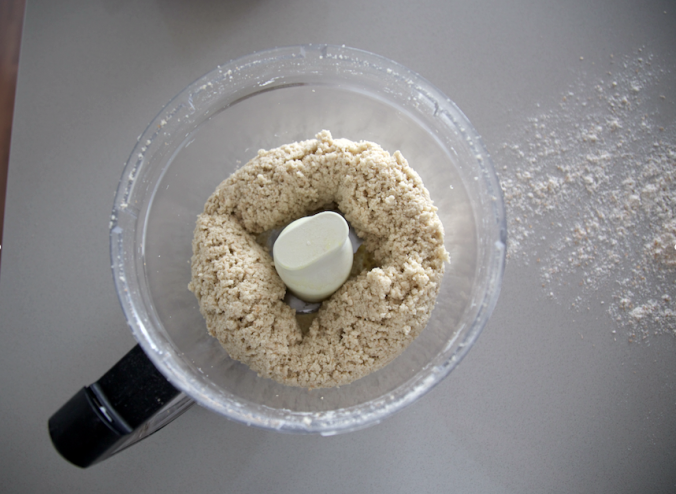
Here’s something delightfully intriguing: the Dorie’s Cookies cookbook has a chapter devoted to savoury cookies. I’m not used to seeing non-sweet things in my baking cookbooks, but there are plenty of interesting (and weird: I’m looking at you, hot-and-spicy togarashi meringues and honey-BLUE CHEESE madeleines) recipes here.
(I am never going to make those madeleines. I hate blue cheese.)

A little while ago, I was supposed to head to a friend’s house for a pre-dinner birthday gathering. I thought the Parmesan Galettes sounded perfect for an appetizer, so I decided to try my hand at my first savoury cookie.
(I ended up having to turn the car around and skip the party because the roads were horrible – so I had these all to myself.) (Note: I wrote this post back in February when snow was still a thing…)

The ingredient list is short and sweet: all-purpose flour, butter, Parmesan cheese, and a bit of sea salt. If you’re reading this, I probably don’t have to tell you to buy the kind of Parm that you have to grate yourself. But just in case… there you go.

This recipe doesn’t require a mixer; it uses the food processor to mix the butter, flour, and Parmesan. Here’s how the dough is described: “process in long bursts until you have a moist curds-and-clumps dough”. Although that sounds incredibly vague and non-scientific, somehow, I knew exactly what Dorie meant when the time came.

I’m pretty sure this is what moist curds and clumps looks like?!
It’s super easy to smush the dough into a log. I was surprised at how teeny tiny the log was, but the recipe yielded 15 galettes, as the book said it would. Before slicing, you pop the log into the fridge for a couple of hours (or the freezer for just one hour, if you’re of the opinion that time is money).

After the dough has chilled, it’s time to slice and dice. The sidebar of the recipe says that these galettes pair nicely with a variety of herbs and spices, so I experimented (conservatively) by grinding a bit of fancy pepper over each galette. (If you’re wondering what fancy pepper is, it comes from France and includes tasting notes – thanks Mom and Dad!!!)


Note: If you look closely, you can see that some of my galettes have a tiny hole in the middle. This is because I didn’t roll my log quite tightly enough. Lessons learned!
The cookbook says that you can either bake the sliced galettes in a muffin tin (for a perfect circular shape and satisfying edges) or free-standing on a cookie sheet.

I baked 12 in the muffin tin and the rest on a baking sheet, and while the muffin ones looked prettier, I found they took a little longer to bake than the designated 15 to 17 minutes. They were more like 20 minutes.

Here’s the verdict on the galettes:
I LOVED them. They reminded me of dinner parties when I was younger. I feel like my mom used to serve cheese straws or something that were just like this. I loved the slightly crumbly texture and I thought they tasted just the right amount of Parmesan. I like Parmesan, but usually as a side cheese, not as a cheese on its own. Like, I wouldn’t typically eat Parmesan alone on crackers. These galettes were fantastic and felt fancy to me.

Cedric did not like them. I did not see this coming from a mile away – in our relationship, I am the one who favours sweets and he likes all things savoury (though he’s never met a chocolate chip cookie he didn’t like). Not only that, but he LOVES cheese – including Parmesan. He will gladly slice Parmesan and put it on a panini (which is exactly what he did with the leftover Parmesan from this recipe). But for whatever reason, this recipe didn’t do it for him.
Oh well. More for me!




























